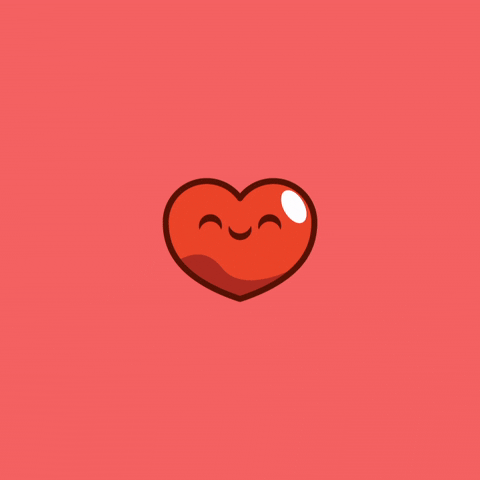The Heart Beats to the Letter B
Emergent Literacy Design
By: Shayna Fetes
Rationale: This lesson will help emergent readers identify /b/, which can be recognized as the phoneme B. The students will begin to learn /b/ through verbalized language, and by the physical analogy of beating the chest, like the human heartbeat. Students will then learn how to write the symbol for B and practice identifying /b/ in written and spoken words. Finally, this lesson will help students understand the /b/, phonetic cue reading with rhyming words with the phoneme /b/.
Materials:
-
Pencils
-
Primary paper
-
Tongue Tickler chart: Bob bounced the basketball with Ben
-
Read aloud book: Brown Bear, Brown Bear
-
Document camera/Smart Board/Projector to go over read aloud
-
Phonetic Cue Cards: Ben, Hair, Ball, Yarn, Fat, Boy
-
Assessment Worksheet for identifying images with B
Procedure:
Say: Sometimes when we look at a book and we want to try and read it, it might be hard for us to read it at first. This is because we must learn what all those letters sound like and how they can make a word. We are going to learn how our mouth makes the letters come to life, so we can understand what each letter represents. Today we are going to move our mouths to /b/. We spell /b/ with the letter B. The letter B looks like two butterfly wings and makes the sound like a heartbeat.
Say: Let’s pretend we are a beating heart, /b/, /b/, /b/. [This is where you but your hand over your chest and beat it every time you say /b/.] Can you tell me what you see with my lips when I say /b/? [Point where the bottom and top lips meet]. When we say /b/, we bring our lips together and then make the sound as they come apart.
Say: Let me show you how to find /b/ in the word Ball, as in football. I’m going to make the word ball, long, super slowly and listen for my heartbeat. Bbb-a-a-all. Slower: Bbbb-aaa-lll. Did you see it?! I just felt my lips touch and come apart to make the sound. Heartbeat /b/ is in ball.
Say: Let’s try our tongue tickler [it’s on the chart]. At recess Bob wanted to play ball. Nobody had a ball. They only had bubbles. But Ben had a ball. He had a basketball. Here’s our tongue tickler: “Bob bounced the basketball with Ben.” Now I want everyone to say this four times. Now we’re going to say it one more time, but this time we’re going to stretch /b/ when we feel our lips touch. “Bbbobbb bbbounced the bbbasketbbball with Bbben.” We’re going to do it again, but this time let’s break it off the word: “/b/ o /b/ /b/ ounced the /b/ asket /b/ all with /b/ en.”
[Have students take out primary paper and a pencil] Say: We use the letter B to spell /b/. Our capital B has two butterfly wings because the move like our heart beats. To write the uppercase B, we draw a line from the rooftop to the sidewalk. Then start at the rooftop and draw a sideways U to the fence. Finally, draw another sideways U this time from the fence to the sidewalk. Now let’s write the lowercase letter b. Let’s start by drawing a straight line starting at the rooftop down to the sidewalk. Once we have the line, we are going to draw another sideways circle. Start the circle from the sidewalk to the fence all the way back to the sidewalk. Make sure it connects to the very first line we made. Now, I want to see everyone’s b. After I check your work and give you a star, I want you to practice it three more times. Don’t worry we’ll practice this more later.
Call on students to answer and tell how they knew: Do you hear /b/ in Big or fig? Rad or bad? Bag or lag? Hat or brat? Bee or fee? Say: Let’s see if you can find the mouth move /b/ in some words. Beat your chest anytime you think you hear a /b/ word: Ben, bounced, the, ball, with, Bob.
Say: “Let’s look at a fun book. In this story we meet brown bear. We ask him a question about who does he see? We must read the story to find out who’s on the next page. Read a few pages of the story, drawing out the /b/s. Ask the children to raise their hands or beat their chest anytime they hear the /b/. Then ask them how many /b/ they heard, go over the right answer.
Show BEAR and model how to decide if it’s bear or hair: the B shows our heart beating, /b/, so this word is bbbb-ear, bear. Now it’s your turn: Ben: ben or hen? Hair: hair or bear? Ball: ball or fall? Yarn: yarn or barn? Fat: fat or bat? Boy: boy or toy?
For the assessment at the end, the students will be handed a worksheet for tracing the letter B and identifying pictures with the letter B too. They will color or circle the pictures that start with B. As they work on this, students will be called up and read the phonetic cue cards with me.
References:
-
Brown Bear, Brown Bear. Eric Carl. 1967.
-
Super Teacher worksheets: Phonics-beginning sounds B: https://www.superteacherworksheets.com/phonics-beginningsounds/letter-b_WFFMM.pdf
-
A similar lesson by Shelby Ptak, The Big Bag Bulldog: https://shelbyyyptak2000.wixsite.com/my-site/emergent-literacy
